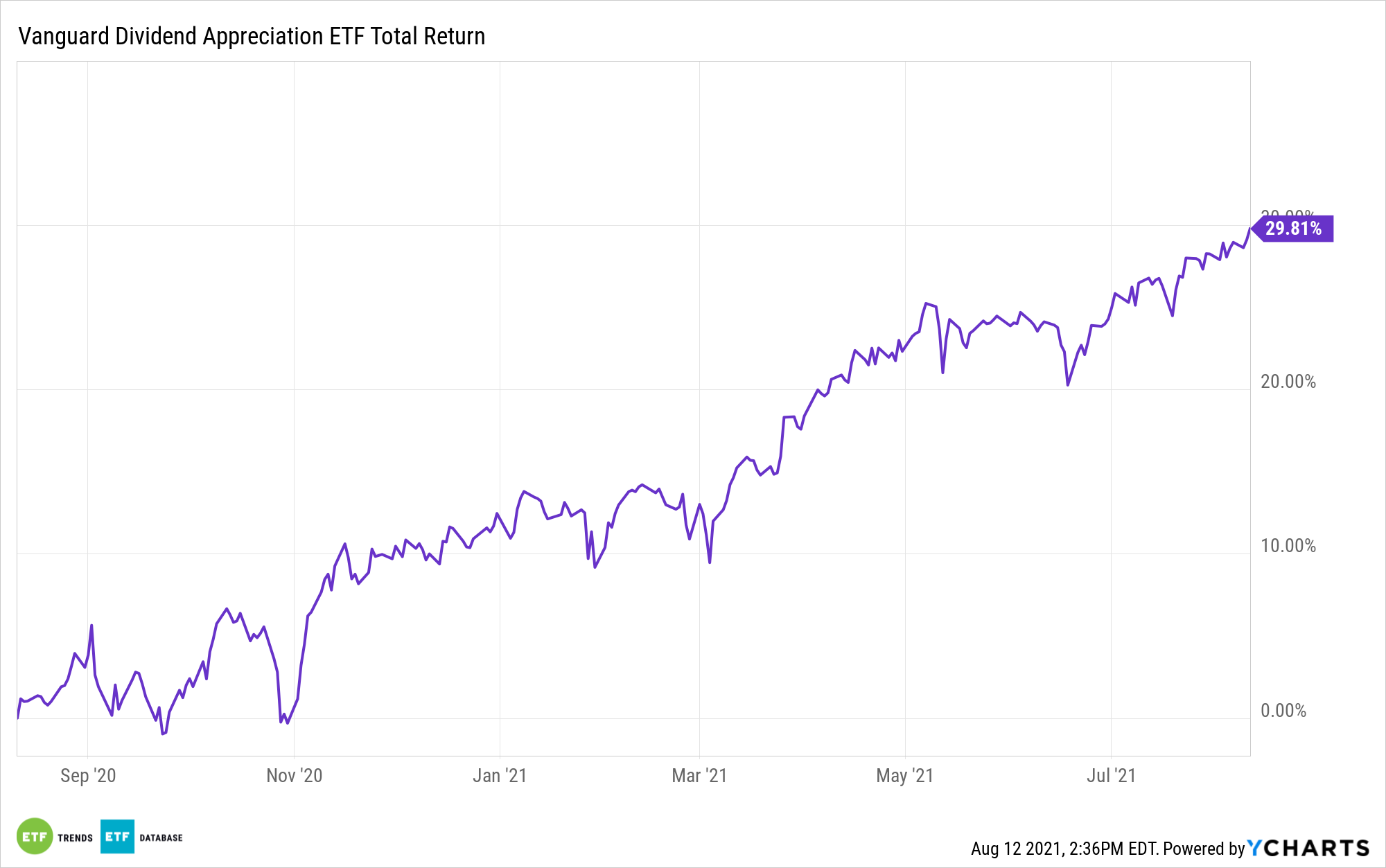The Vanguard Dividend Appreciation ETF (NYSEArca: VIG) and the Vanguard High Dividend Yield ETF (NYSEArca: VYM) are two of the largest dividend-oriented exchange traded funds, but they aren’t carbon copies of each other. For its part, VIG – largest dividend ETF trading in the U.S. – focuses on companies with dividend increase streaks of at least 10 years.
Source: Original Postress-this.php?">Seeking Dividends? Consider Two Venerable Vanguard ETFs
On the other hand, VYM emphasizes higher yielding stocks. Those differences are crucial for investors and dividend durability as a whole.
“The strict inclusion criteria that VIG employs have clearly paid off in the form of a steady stream of dividends. Its 10-year dividend growth requirement and additional quality screen have yielded a portfolio of stocks that are much more likely to maintain and grow their dividends,” writes Morningstar analyst Lan Anh Tran. “As it screens stocks exclusively on the basis of their 12-month forward dividend yields, VYM’s constituents’ dividends have not been nearly as durable.”
While VYM is designed to be a high-yield strategy, it’s current dividend yield of 2.77% isn’t alarmingly high, and its lineup isn’t littered with probably dividend offenders. VIG yields 1.56%, which is above the S&P 500, but not over the top by any means, a testament to its payout growth focus.

Some Similarities to Consider
VYM checks the yield box while VIG delivers on the dividend growth front, and while those are divergent objectives, the funds have some holdings-level similarities.
For example, the pair of Vanguard ETFs have 109 overlapping holdings and the overlap by weight between the two funds is 49%, according to ETF Research Center data. That’s a hefty percentage and as such, the ETFs’ unique holdings help set these funds apart.
- Tobias, Andrew (Author)
- English (Publication Language)
- 320 Pages - 04/19/2022 (Publication Date) - Harper...
- Reference Guide, Investment Lawyer's (Author)
- English (Publication Language)
- 46 Pages - 07/12/2019 (Publication Date) -...
“In terms of yield, VYM’s unique holdings predictably rank higher than VIG’s unique positions. And, as expected, VYM lags both when it comes to the aggregated dividend growth of its holdings,” says Morningstar’s Tran. “This is partly attributable to the high percentage of its holdings that either decreased or suspended their dividends. While VYM’s index removes stocks that suspend their dividend, those that reduce their payouts but still pass its yield criteria can linger in the portfolio.”
With consistent dividend growers typically viewed through the lens of quality stocks, and with the quality factor often having favorable volatility traits, VIG’s drawdowns usually aren’t as large as VYM’s.
However, VYM has some points in its favor, including a lower valuation than the VIG lineup and the fact that most of the dividend offenders that resided in VYM over the years have cut payments by smaller amounts.
For more news, information, and strategy, visit the Dividend Channel.
The opinions and forecasts expressed herein are solely those of Tom Lydon, and may not actually come to pass. Information on this site should not be used or construed as an offer to sell, a solicitation of an offer to buy, or a recommendation for any product.



